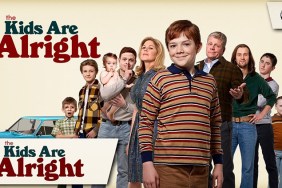The first time a savvy traveler visits a given city, he or she should hit all of the traditional tourist sites. Check them off and get it over with so you can say you saw all of the most famous landmarks.
In New York, that means Times Square, the Statue of Liberty, the Empire State Building, 30 Rock, Central Park, a Broadway show and MOMA or the Met. However, once those are enjoyed and filed away in the memory bank, Manhattan offers endless culture around every corner.
Hidden away in Hell’s Kitchen, the parlor of Belinda Sinclair hosts small, intimate magic shows to groups of no more than eight to 10. Her standing show, A Magicienne Among the Spirits, is a 90 minute exploration of closeup sleight of hand mixed with a journey through the history of magic, women in the art and its place in New York and around the world.

Sinclair is a veteran of the art and a flawless practitioner of closeup magic. She’s good enough to throw some very impressive tricks away as an afterthought while merely warming up her audience — knowing full well she’s guaranteed to hit enough home runs later in the show. She’s also an actress trained on the New York stage and enjoys dabbling a little character work into her show.
Finally, she studied hypnosis, neurolinguistics, body language, neuroptics and various elements of mentalism. Those skills allow her to read either an individual or a room of guests in order to tailor a trick or a show to the moment. Sinclair could use those skills to make fools of people. Instead, she endeavors to make them happy and to leave them a little wiser.
Related: Westhouse Hotel New York, Pretty in Midtown
Having taken in some of Sinclair’s work — both as a spectator and a participant — it’s clear there are three ways for the average traveler or audience member to take in the experience.
First, you can sit back and completely embrace the concept of magic in the world with childlike wonder. Unfortunately, it’s obvious there aren’t a lot of functioning adults in the world that would really embrace that approach. We know magic tricks are tricks. Sinclair knows they’re tricks. She’s performing them as tricks. Audience and magicienne meet with the understanding that the former wants to be tricked, and the latter wants to entertain. So, Sinclair never treats a crowd like suckers or marks, and the audience can engage in some suspension of disbelief.
Sadly, audience members down’t always play along — making way for the second kind of audience reaction. You can engage in the self-inflicted foolishness of trying to outsmart the magician or figure out the trick. You can try to get out ahead of the reveal and try to come up with an angle or a choice for which Sinclair couldn’t prepare. In other words, you can ruin it for yourself.
I admit I don’t grasp this philosophical choice for an audience member. He or she puts down their hard won cash for a ticket. They choose to engage in the experience as an audience member — only to attempt the murder of any fun or entertainment such a show can offer.
To this person, I say the obvious: You won’t figure out the trick. You won’t throw the performer. The moment of truth will be by you before you knew to look for it — or it’ll delays its arrival time until you’re smug enough to think it’s already passed. Your attempt to short circuit the fun could ruin the show for others. I’m certain Sinclair can see you coming a mile off and will shift the performance to negate your magic-killing quest.
In the end, you won’t see the punchline coming. You’ll end up being the punchline. So lighten up, sunshine.

As I took in Sinclair’s performance, I settled into the third category. Naturally, it’s my favorite. You can know it’s a preset, rehearsed trick and still appreciate and honor the endless hours of rehearsal and years of study required to perform that trick and the entire act around it. That’s how art is enjoyed. Do you have to know how paints are blended to appreciate the beauty of the Mona Lisa or The Persistence of Memory? Is it necessary to study a vibrating larynx to revel in the voices of Maria Callas or Elvis Presley? No. We enjoy without needing to break down function. Magic can work that way, too.
Before setting a happy audience out under a New York Moon, Sinclair provides a final service — a sort of after effect that can only leave her audience richer. She uses magic to demonstrate how anyone can be manipulated — how suggestibility and psychology play a role in our choices. She knows that subtly flashing a card often enough in a shuffle or a fan is enough to trigger a subconscious urge to choose such a card. Sinclair engages in that forced suggestibility for entertainment purposes successfully — but others are more than willing to put similar tricks to work on a much grander scale with no thought to anyone’s well being.
Advertising uses such techniques to generate fear, scaring you into buying things you don’t need lest you end up sick, ugly, broke, ridiculed, etc. A cold reader can pull the money from your wallet while pretending to speak to a dead loved one. A politician telling you he or she offers “hope” plays off a psychological trigger that your life is otherwise hopeless without them — creating a savior where none really exists.
While packing laughter and amazement into her shows, Sinclair also encourages her audience to slow down and be aware of how they might be manipulated once outside her Conjuring Room. That’s more than a trick. It’s a life lesson that can prove the most magical of all.
Click here for tickets.








